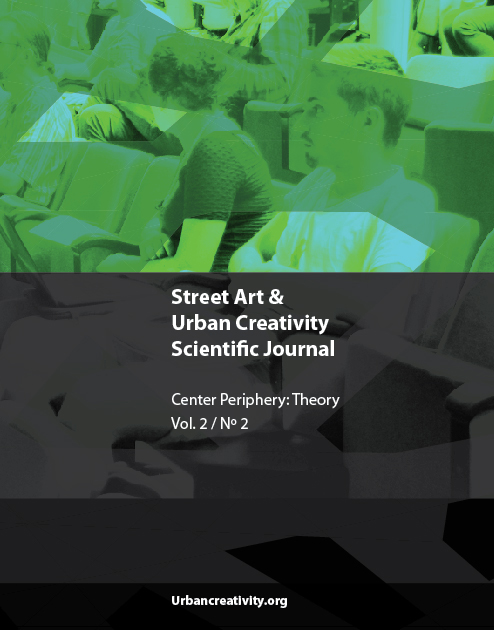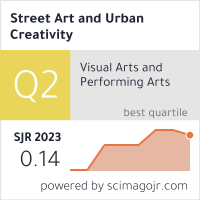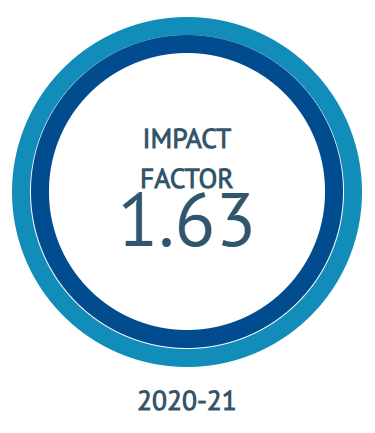Routledge Handbook of Graffiti and Street Art – Book Review
DOI:
https://doi.org/10.25765/sauc.v2i2.56Abstract
This review is of the Routledge Handbook of Graffiti and Street Art, included in the Routledge International Handbooks collection. Published in 2016, this book will be of great interest to Graffiti and Street Art scholars. This publication is of significant importance in a context were there is so much to share and understand about the phenomena of graffiti and street art. The shared common goals of the Routledge Handbook of Graffiti and Street Art with the Urbancreativity research network (which promotes associated conferences and the Street Art & Urban Creativity Scientific Journal – where I’m personally dedicated as a member of the Executive Committee and as Editor) made me propose the present review. The structure of the review mirrors the structure of the book, with forewords, introductions, and four thematic parts. It also includes a prelude where the quantitative facts are presented – the number of chapters, authors, scientific fields represented, nationalities of the authors and case studies, among others. This review regards the book as an element integrated in a culture of research that is being formed. It analyzes the significance that it represents to the Graffiti and Street Art fields of study, but also how it can influence authorial or management practices. There are some omissions to this review regarding the relation of the book within the publishing realm as, for example, I do not analyze how it is related with other titles of the same collection. As a general review that did not want to be partial, there were some concessions to be made – more emphasis is given to the introduction of the book and for each section, and to the overall considerations, balances, coverage, and generic ingredients than to any specific chapter or contributor, topic or approach, this way avoiding individual exclusions or emphases.
The approach was developed in the most analytic way possible, whilst trying to exclude as many personal influences as possible in the review process (as it should be). Some consultations with other researchers were also made as a way of gaining other perspectives and to refresh my individual interpretations. This review also tries to provide the necessary information for researchers that want or need to know more about the content, generic approach and character of this publication.
Routledge Handbook of Graffiti and Street Art / Edited by Jeffrey Ian Ross, ISBN: 978-1-138-79293, Routledge International Handbooks, NY, 2016
Downloads
Global Statistics ℹ️
|
163
Views
|
86
Downloads
|
|
249
Total
|
|
Downloads
Published
How to Cite
Issue
Section
License
Those authors who publish in this journal accept the following terms:
-
Authors retain copyright.
-
Authors transfer to the journal the right of first publication. The journal also owns the publishing rights.
-
All published contents are governed by an Attribution-NoDerivatives 4.0 International License.
Access the informative version and legal text of the license. By virtue of this, third parties are allowed to use what is published as long as they mention the authorship of the work and the first publication in this journal. If you transform the material, you may not distribute the modified work. -
Authors may make other independent and additional contractual arrangements for non-exclusive distribution of the version of the article published in this journal (e.g., inclusion in an institutional repository or publication in a book) as long as they clearly indicate that the work was first published in this journal.
- Authors are allowed and recommended to publish their work on the Internet (for example on institutional and personal websites), following the publication of, and referencing the journal, as this could lead to constructive exchanges and a more extensive and quick circulation of published works (see The Effect of Open Access).













